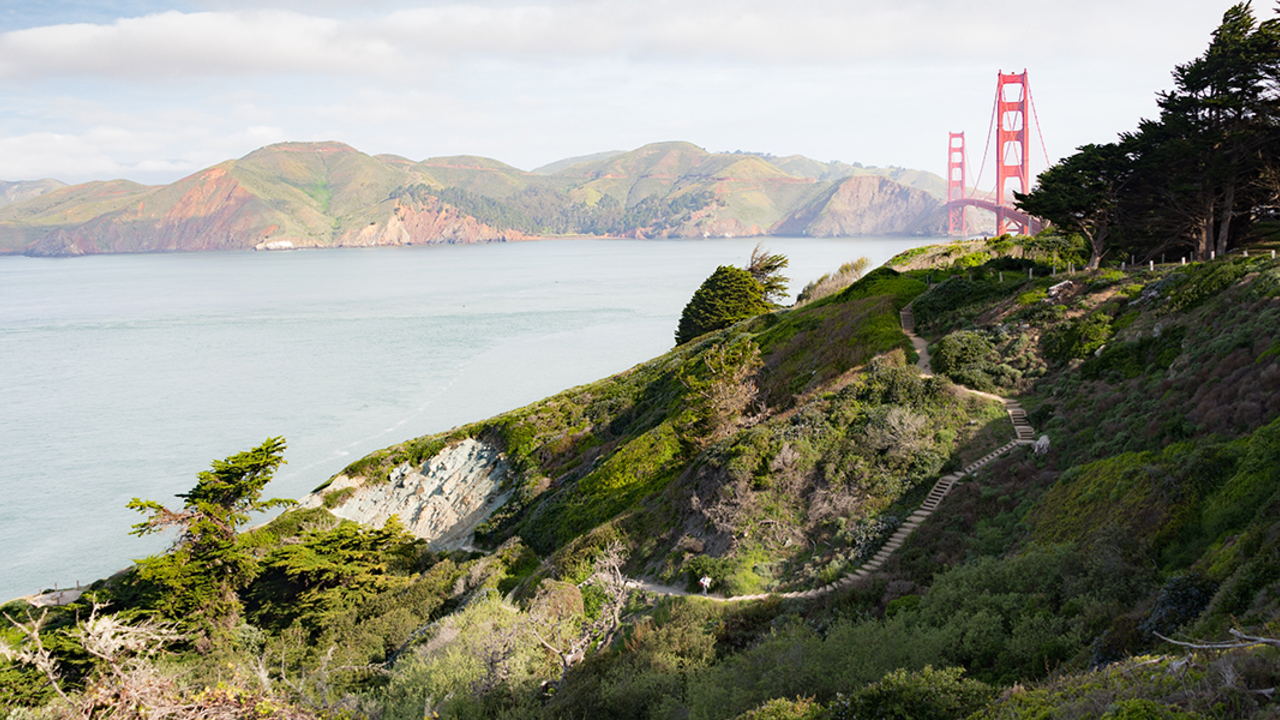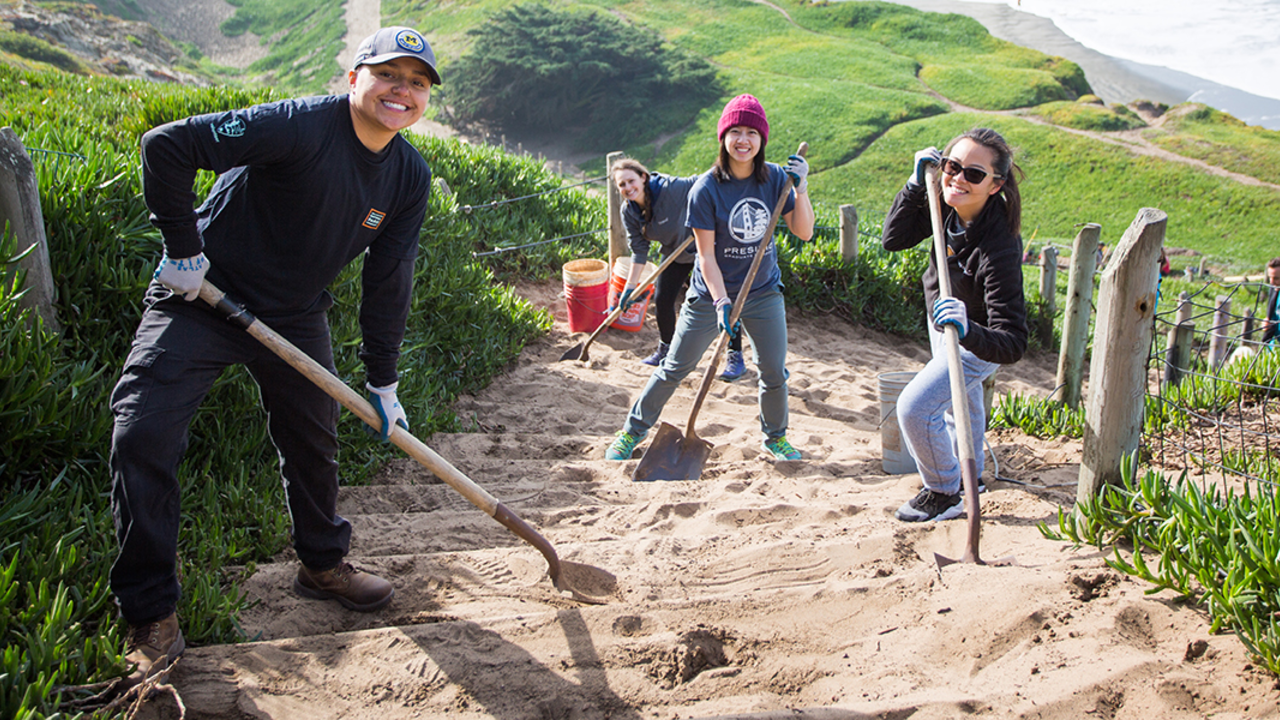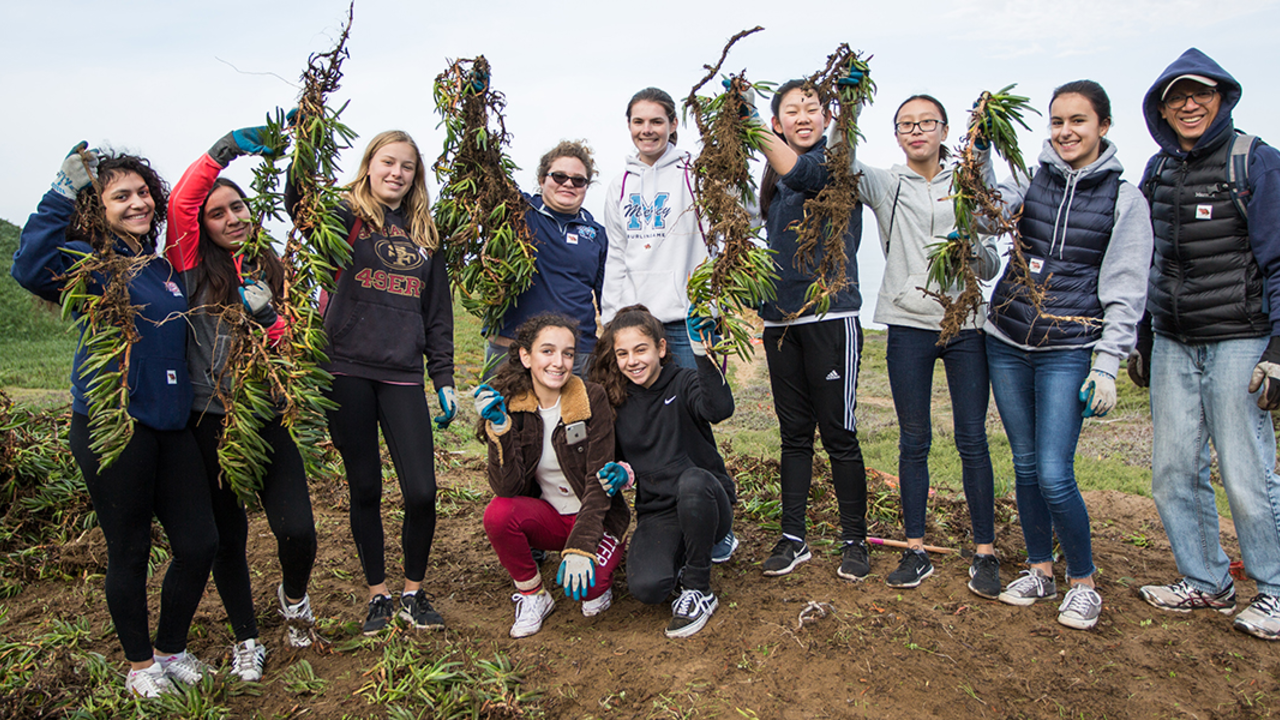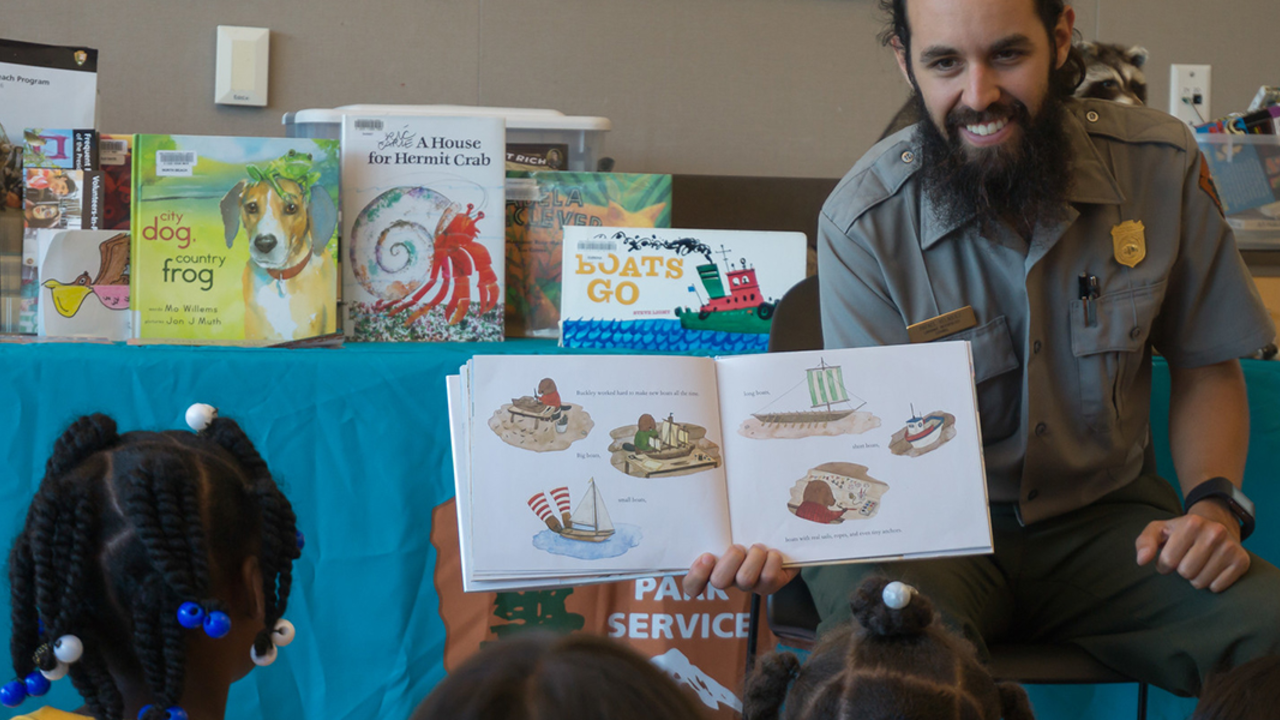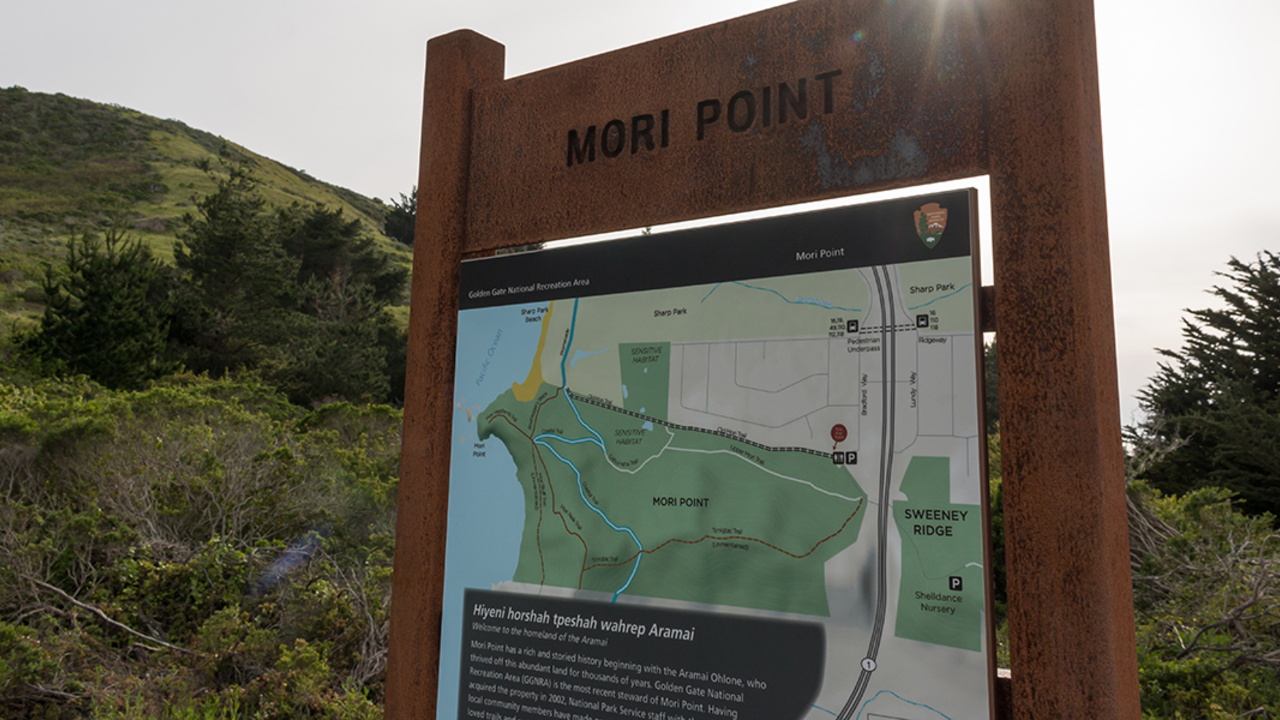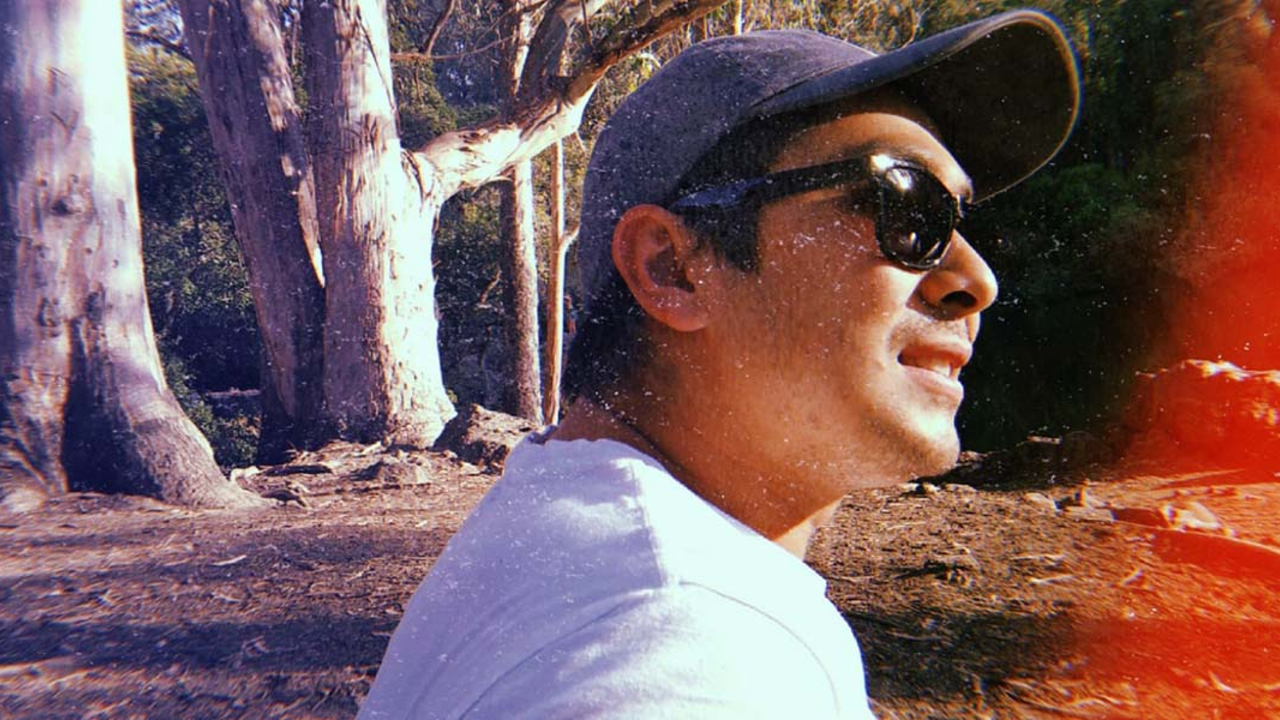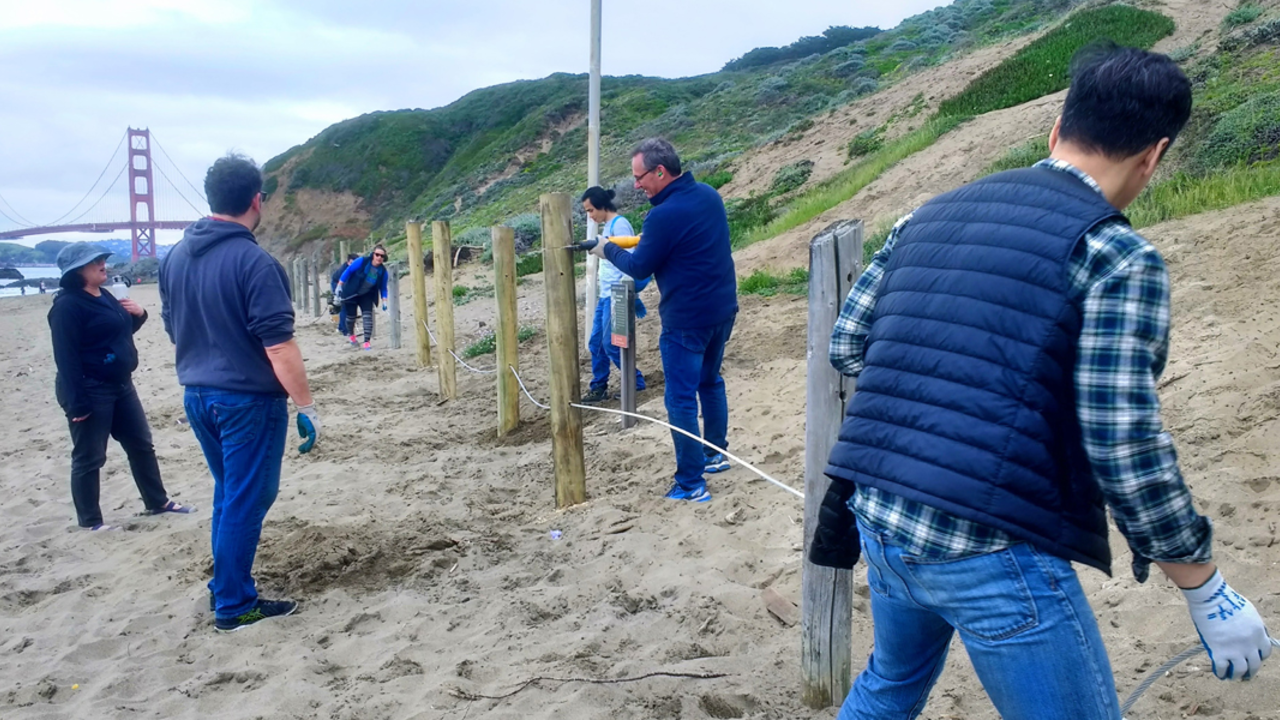The story of a trail: Impressive work goes into rebuilding trails, saving species
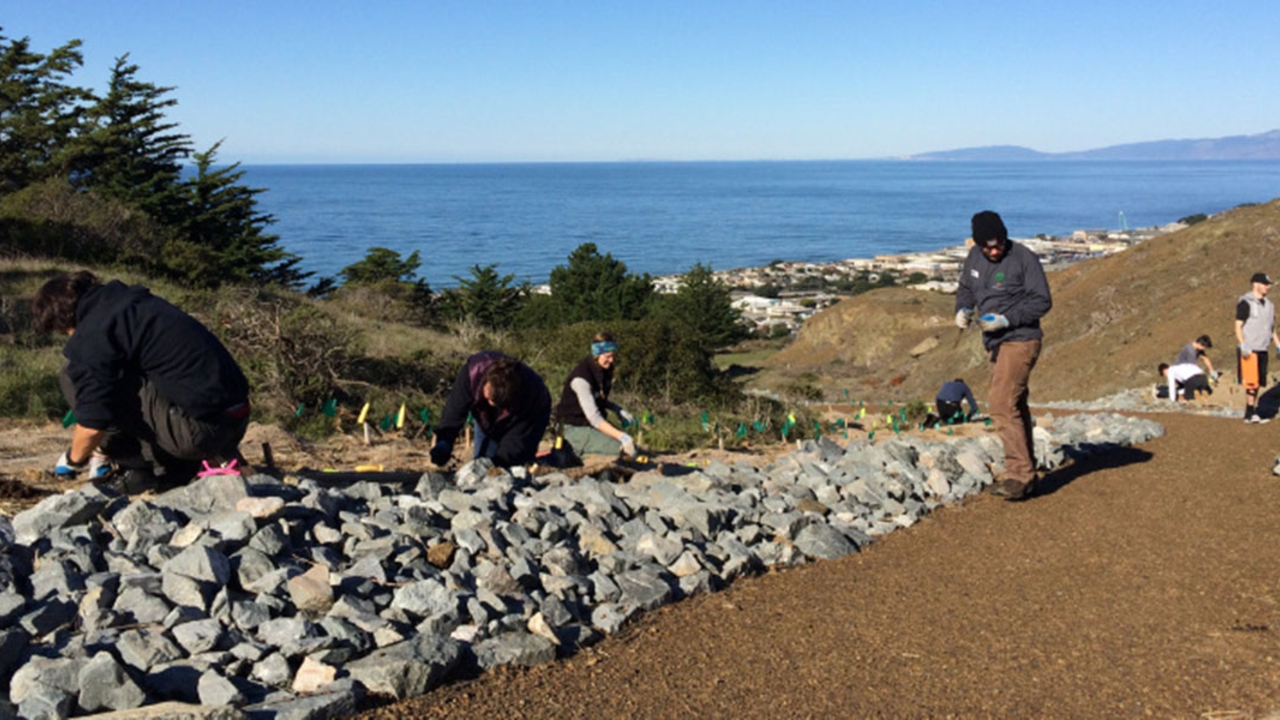
Parks Conservancy
By Samuel Peña
San Mateo Park Stewardship Intern
As I was hiking between two different work areas at Milagra Ridge the other day, I couldn’t help but stop and take a moment to appreciate the awesome trail I was walking on. Earlier that morning I had been doing some weed removal off-trail and was really struggling to navigate the uneven terrain and tall grasses, therefore my appreciation of the ease and comfort of the well-maintained trail was magnified during my afternoon walk.
Later, I took a look at the park trail map and learned the portion of trail I was walking on at Milagra Ridge was also part of the Bay Area Ridge Trail. I’ve heard of the Bay Area Ridge Trail before, but did not quite realize the scope and magnitude of the project.
The Bay Area Ridge Trail currently has 375 miles of trails on ridges that surround the entire Bay Area, with a goal of 550 miles of multi-use continuous trails upon completion. Coordination amongst all the various government agencies and private landowners to achieve the completion of this project must be no easy task.
In addition, when I think of the construction and maintenance of each mile in the 550-mile goal, it made me ponder the amount of time and labor required to make such an extensive trail network. I’ve been a hiker and trail user for most of my life, however I came to the realization that I have not been appreciating and valuing trails to the extent that I should be. This thought inspired me take a closer look at what it actually takes to construct and maintain trails throughout our parks.
The construction of the Milagra Battery Trail at Milagra Ridge took place only a few years ago, so I was able to see photo documentation of the step-by-step process before, during, and after the trail was completed. From what it once was, to now after completion, the photos shined a light on the amount of work and effort it takes to construct new trails.
Before a trail project begins, project goals initially need to be established. Some of the goals for the Milagra Battery Trail Project included the removal and de-compaction of old military roads and trails, restoration of natural landscape features, removal of invasive plants, construction and maintenance of appropriate and sustainable trail alignment, and the implementation of long-term site stewardship actions.
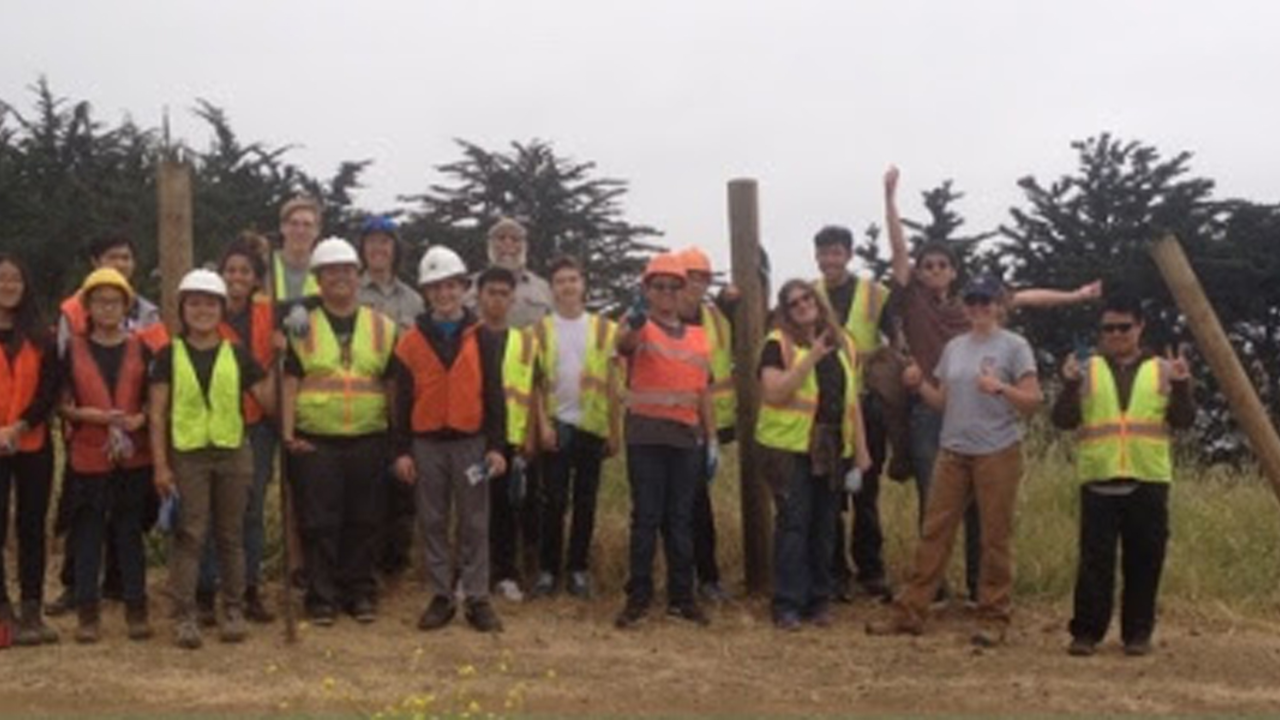
The first step of creating the Milagra Battery Trail was removal of the invasive weeds that blocked access for where the trail would pass through. This began in 2013, and required the removal of six acres of jubata grass, 14,900 individual French broom, and 464 saplings and trees.
Shortly thereafter, the Golden Gate Trail Crew began working on the trail itself. Using gabion rock, large pieces of rock designed specifically for building rock walls, the crew built the retaining wall on the upper section of the trail. This retaining wall maintains the beautiful switchback of the trail and reduces the rate of erosion from the hillside where the trail is built. From there, the crew continued building up the trail tread with a mixture of gabion rock and red shale, which is the compacted material you actually walk on. With over 10 trail crew members, an excavator and mini dump truck, and 100-plus volunteers, the trail itself was finally complete in less than five months.
After construction of the trail was complete, restoration of the space bordering the trail was led by Park Stewardship San Mateo staffers who, with the help of many volunteers, planted over 5,000 native plants from the Oceana Nursery. This was a huge feat, as the conditions were very compacted, and up a steep and rocky hill.
The Parks Conservancy has a longstanding relationship with Oceana High School, and students began stewarding this new portion of the site in 2016, and continue to provide service to the park weekly.

I hope you feel inspired now, as I was, to consider the work that goes into making our open spaces accessible with trails. If you’re interested in helping, I want to extend a warm invitation to join the upcoming National Trails Day, which will be taking place at Mori Point on Saturday, June 1.
We’ll spend the morning re-grading the Upper Mori Trail, which needs some help after this past wet winter. Keeping our trails functional helps protect threatened and endangered species at our national park sites, like the San Francisco garter snake and California red-legged frog.
National Trails Day is an event that is sponsored by the American Hiking Society and has been taking place every year since 1993. The American Hiking Society is expecting a world record this year for the most people improving trails in a single day and we hope you can be a part of it!
